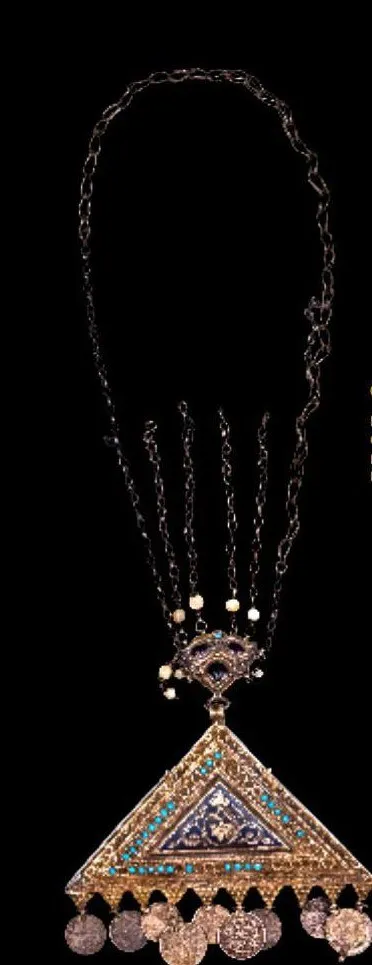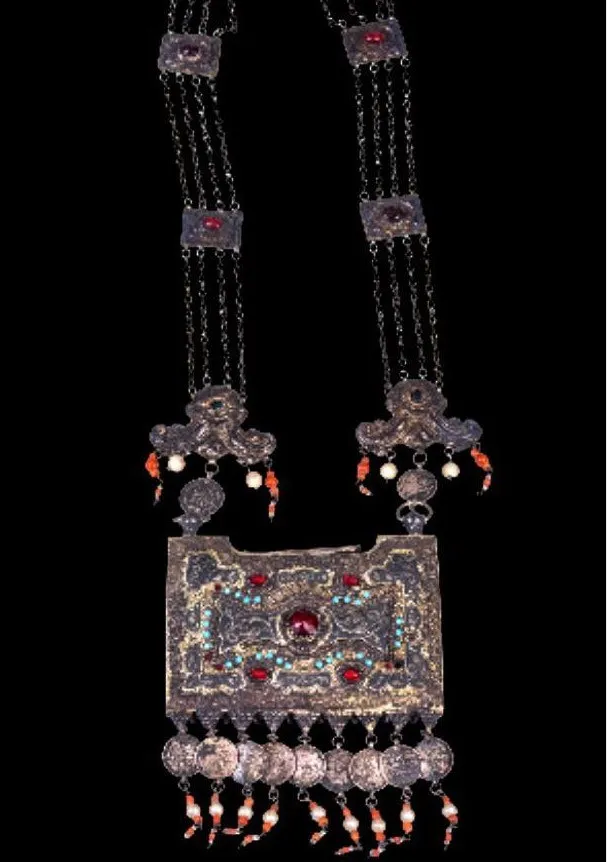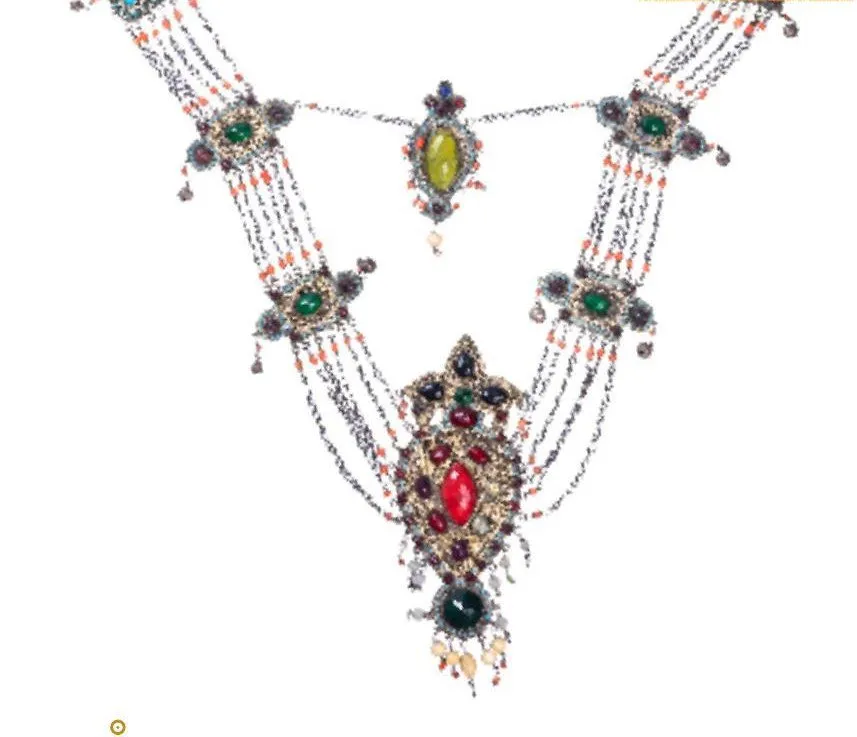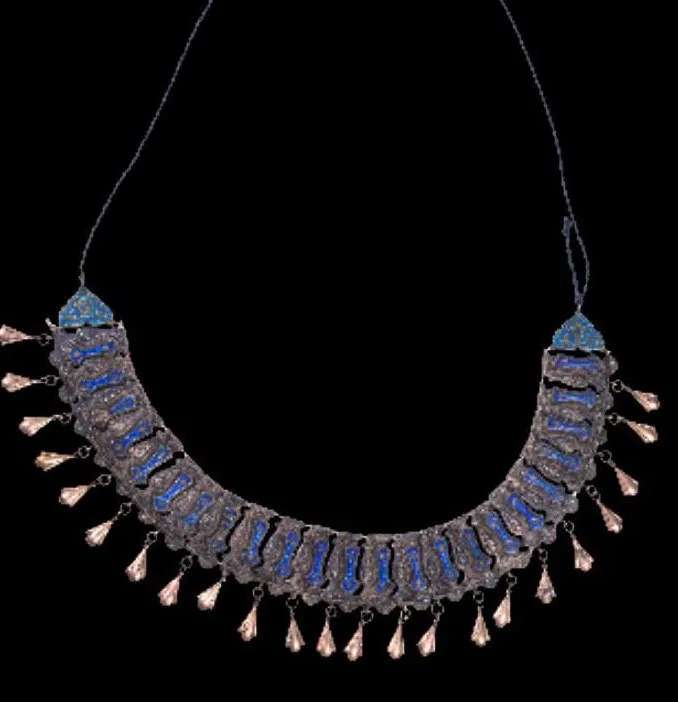As is known, each ruler minted his own coins. When authorities changed, the coins of the previous ruler lost their validity. This resulted in large numbers of invalid metal coins in people's possession. Jewelers began to use them as additional adornments. Some of the items they designed consisted entirely of coins, such as the necklace tanga munchkins.
Necklaces – munchok, nozik munchok, dur a nd o thers – w ere p articularly r ichly ornamented. Hair adornments are known under the names of soch popuk and jamalak. Unmarried girls made small braids on their head, the number of which could reach 40. After the wedding, they made two braids. The metal parts of soch popuk were different shapes and had pendants in the form of beads or coins. Elderly women decorated their hair only with laces of black silk threads.
Almost all types of the 18th-19th-century jewelry can be found displayed at the Kokand State Museum-Reserve and its divisions. Some of them, in particular those from the Museum of Applied Arts collections, are unique. These include, for example, mohitillo and bibishok pendants featuring exquisite forms. Another item occupying a special place in the jewelry collection is a pair of gajak temple pendants. They used to be worn in pairs, and therefore consisted of two identical copies. Gold, silver and various stones were used to make gajaks.
What makes the modern jewelry art of Kokand so original is the wide range of artistic means, craftsmen‘s limitless creative abilities and the exceptional diversity of materials and decor. For a jeweler, the most important is the quality of material created by nature: gold shining like the sun, elegant silver, sparkling precious and semi-precious stones, pearls, corals, glass, enamels and other. There is also the widest range of metalworking techniques, such as stamping, carving, casting, blackening, gilding, granulating, filigree… Unique items made by Kokand jewelers show that the most successful approach in this art is the combination of traditional techniques with modern methods.
Among the most outstanding younger generation craftsmen is Muzaffarjon Yusufjanov, who continues the traditions of the local jewelry school. He was born in the New Chorsu area in 1975. Four of the five children in his family – Muzaffarjon, Marifjon, Malikjon and Madaminjon – diligently learned the secrets of the craft from the experienced usto Sharifjon Suleymanov. Now each of them is engaged in jewelry business independently. Inspired by the forms of traditional jewelry stored in the treasury of the State Museum of the History of Kokand Culture and the State Museum of Applied Arts and the History of Handicrafts in Tashkent, Muzaffarjon recreated some of the most interesting examples. The combination of tradition and innovation allows jewelry art to retain its importance in the life of the society.
You can learn more about the topic in the book-album “The Collection of the Kokand State Museum-Reserve” (Volume XLIII) in the series “The Cultural Legacy of Uzbekistan in the World Collections”.
The main sponsor of the project is the oilfield services company Eriell-Group.




